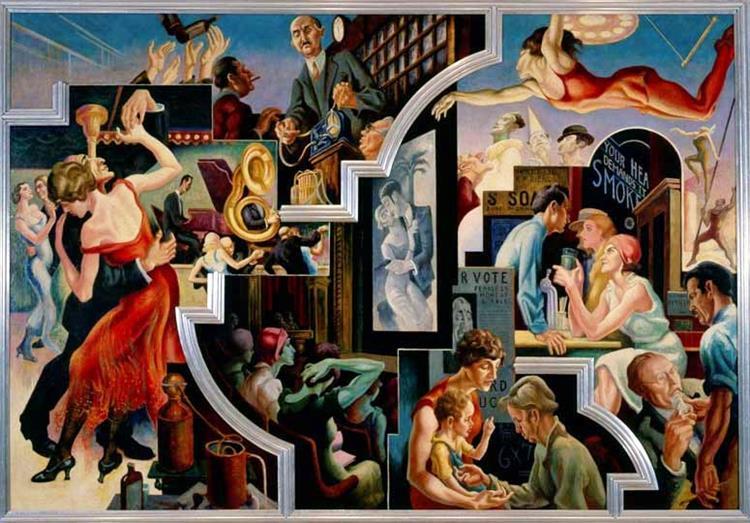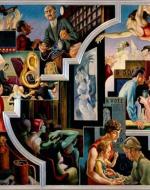Created by Colin Schroyer on Wed, 04/03/2024 - 12:01
Description:
The Roaring Twenties are a period characterized by glitz, glamour, and prosperity in America, typified by lavish city lifestyles. Sarah Pruitt for History writes, "From 1920 to 1929, America enjoyed an economic boom, with a steady rise in income levels, business growth, construction and trading on the stock market." (Pruitt). No work of American literature best encapsulates the economic progress than F. Scott Fitzgerald's The Great Gatsby. The novel encapsulates the optimism of the American Dream - the possibility of achieving success and accomplsihing one's goals through the opportunities available in America - with an accurate portrait of the Roaring Twenties. As a matter of fact, scholar Roger L. Pearson, in his article "Gatsby: False Prophet of the American Dream," goes so far as to say, "F. Scott Fitzgerald has come to be associated with this concept of the American dream more so than any other writer of the twentieth century" (638). This American Dream is best seen in how "Gatsby’s war service... kicks off his rise from a 'Mr. Nobody from Nowhere' (in the words of his romantic rival, Tom Buchanan) to the fabulously wealthy owner of a mansion on West Egg, Long Island" (Pruitt).
Thomas Hart Benson's City Activities with Dance Hall captures the livlihood and frenetic energy of the time period; this sort of cacophany visually presents, if not an actual depiction, the atmosphere of Gatsby's lavish parties. The parties bustle with excitement, music, and swathes of guests. Nick Carraway, as a third-party onlooker, describes the scene as such: "There was music from my neighbour’s house through the summer nights. In his blue gardens men and girls came and went like moths among the whisperings and the champagne and the stars" (Fitzgerald). Comparing Gatsby to Benson's painting, both capture the frenzy and popularity of the party life during this era of American history, allotted by the economic growth and progress.
Though this progress is short-lived, with the Great Depression on the horizon, Fitzgerald encapsulates the historical "lightning in a bottle" that was the American Roaring Twenties.
Works Cited:
Benton, Thomas Hart. City Activities with Dance Hall. 1930, Metropolitan Museum of Art (MET), https://www.wikiart.org/en/thomas-hart-benton/city-activities-with-dance.... Accessed 15 Mar. 2024.
Fitzgerald, F. Scott. "The Project Gutenberg eBook of The Great Gatsby." Project Gutenberg, 1925, https://www.gutenberg.org/cache/epub/64317/pg64317-images.html. Accessed 1 May 2024.
Pearson, Roger L. "Gatsby: False Prophet of the American Dream. " The English Journal, vol. 59, no. 5, 1970, pp. 638-45. JSTOR, https://doi.org/10.2307/813939. Accessed 5 May 2024.
Pruitt, Sarah. "8 Ways ‘The Great Gatsby’ Captured the Roaring Twenties—and Its Dark Side." History, A&E Television Networks, 16 Nov. 2016, https://www.history.com/news/great-gatsby-roaring-twenties-fitzgerald-da.... Accessed 5 May 2024.
Copyright:
Associated Place(s)
Part of Group:
Featured in Exhibit:
Artist:
- Thomas Hart Benton


